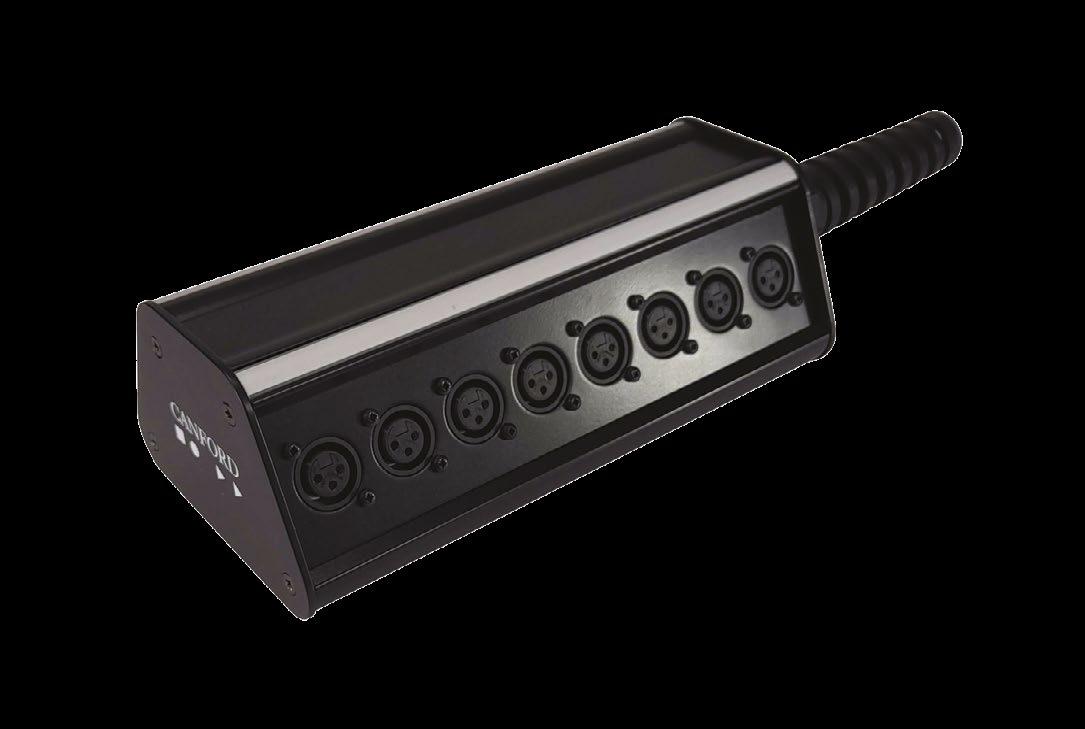WHY A yellobrik ISN’T JUST A BRICK By Dave Holloway, LYNX Technik Director of Sales EMEA There can be no doubt that the humble ‘throw down’ brick as our American cousins would call them, (although we don’t recommend throwing equipment around) has played a vital role in broadcast systems for many years. Originally conceived as economical and convenient ‘glue’ to add some basic standalone functionality and fibre or format conversion to the periphery of a larger system, the now ubiquitous yellobrik functionality continues to grow. Often in temporary systems or emergency situations, a modular brik is an ideal solution. We know many OB and Fly-away system facilities providers who carry a ‘First Aid Toolbox’ of yellobriks allowing them to rise to unexpected challenges on site. From long distance fibre extensions around obstacles that weren’t there during the survey, emergency fibre switching, 12G SDI format conversion, embedding additional audio feeds, generating Reference signals and frame synchronisation, to converting to a range of output formats for surprise additional feed or monitoring requirements, yellobrik has it covered. But there are concerns and drawbacks to a modular approach in critical path or core infrastructure. Reliability is probably the biggest concern for the programme maker or broadcaster. The LYNX reputation for reliability stems from attention to detail and control in all areas. Hardware and software design, and manufacturing takes place in Germany in our ISO 9001 Certified environment. Cost is obviously a big consideration for us, and the user, but we believe reliability and long-term value are more important. We will not compromise quality, performance, reliability, and support for the sake of a few Euro saving in the short term. The unrivalled reputation of yellobrik and their extensive use in live broadcast critical paths validates our quality driven philosophy. Some aspects however are beyond our control. The provision of a redundant AC system power supply is an obvious precautionary measure built into most critical systems, but where does that leave the brik with its single AC/DC power adapter and single inlet socket. Lynx Technik offer a solution in the form of the yellobrik Rackframe which not 34 | Source Material by Canford
only accommodates up to 14 modules in as little as 1U of rack space but can optionally have a second external AC/DC power supply connected ensuring a seamless switch from the primary to backup AC should one source fail. The modules simply plug in to the rackframe slots and onto the fixed DC connectors and are locked in place from the rear. No DC cables are required to each module and GPI/O contacts allow monitoring of the rackframe power supplies. Having set the standard for reliability and redundant power support, LYNX have pushed the boundaries of what can be achieved in a compact module. Currently the range includes: • 4K format conversion (SQD<>2SI<>12G coax) • Frame Synchroniser • UPXD Converter / Scaler • HDMI <> SDI Conversion • Audio Embedding/De-embedding • Opical <> Copper conversion • Optical Switching • Quad Split Multiviewer • H.264 Encoder and Recorder - most with fibre SFP options. Along with a range of passive CWDM multiplexer modules, the fibre transmission range offers the options of: • Copper to SM or MM fibre • Bi-Directional WDM on a single fibre • 18 channels of CWDM multiplex fibre - for transport of SDI from SD to 48K, Audio, MADI, Sync/ Analogue video, 10G and Gigabit ethernet and RS serial data/GPI and vice versa of course. With the increases in functionality and the confidence of redundant powering, we continually see broadcast organisations incorporating yellobriks as permanent core infrastructure, both static and mobile. In fact, there are very few domestic and international sporting events and TV shows to which yellobrik has not made a vital contribution.
Call UK sales on +44(0)191 418 1122 or email sales@canford.co.uk






























